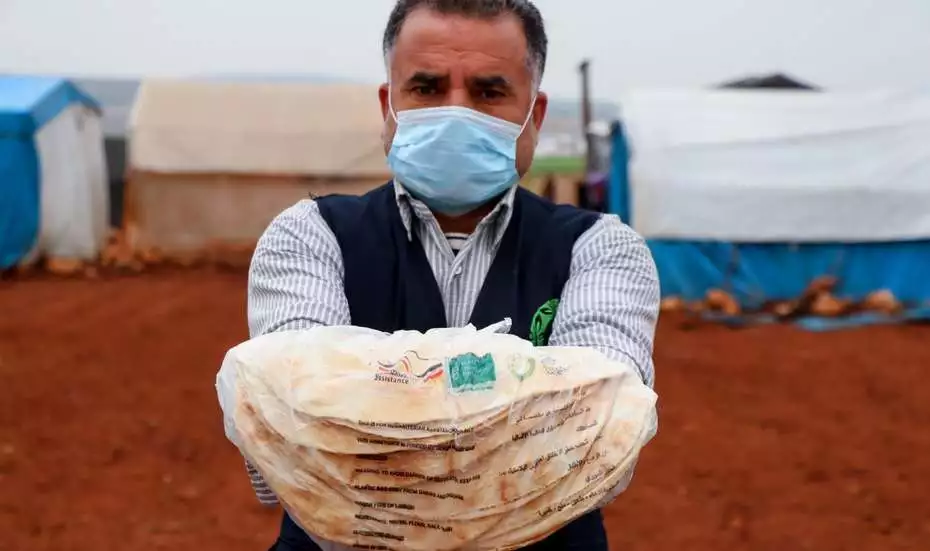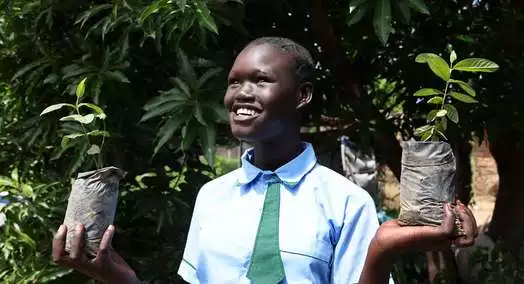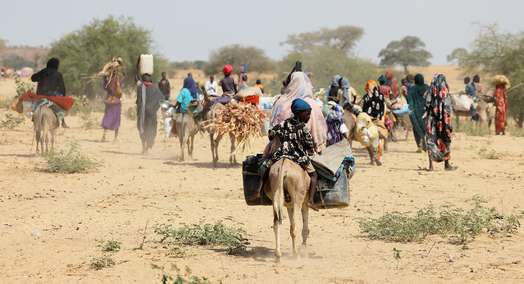Since 2011, the armed conflict in Syria has continued, with disastrous consequences for the people in the country.
Improving living conditions in refugee camps
In Syria, millions of refugees are persevering in inhumane refugee camps. Food and housing containers alleviate the most urgent need.

When Amal Kahir Allah looks at her children, her expression turns sad. "The worst is when your child asks for food, but you can't even afford simple things like bread," she says thoughtfully, "When evening comes, we don't even have a candle to chase away the darkness in the tent."
Like so many Syrians, Amal lives with her three young children in a refugee camp in northwestern Syria. Since the civil war began in 2011, more than 13.2 million people in Syria have been forced to leave their homes. The majority of the refugees, some 6.7 million people, are on the run within the country. Many have already had to leave their place of refuge several times due to the recurring fighting. They all have one thing in common: they hope to be able to return home at some point.
Refugee camps are at the end of their capacity
Amal has not yet given up that hope either - even though she would have every reason to despair. "It is very hard to have to live in a leaky and thin tent. Especially in winter, when temperatures drop and it rains all the time," she says. The humanitarian situation in the refugee camps is catastrophic; they have long been overcrowded and at the end of their capacity. Very often there is a lack of food, clean water and sufficient toilets. Accordingly, the hygiene conditions are unworthy, people can hardly protect themselves from diseases. A total of 13.4 million people are dependent on humanitarian aid, and more than 12 million people do not know how to feed themselves.
The situation is made worse by hyperinflation: The Syrian lira has lost a great deal of its value, and as a result food prices have almost doubled within six months. Hardly anyone can afford food, fuel or hygiene articles anymore.
Housing containers and food vouchers for a more dignified life

Together with its Syrian partner organization Ihsan Relief and Development, Welthungerhilfe (WHH) is helping the people to alleviate their currently dramatic living situation. For example, it is replacing a total of 240 tents with robust living containers, which means the refugees are better protected from the harsh weather conditions. Vouchers are also distributed to enable them to buy food, clothing and fuel for heating and cooking.
"I wish I could take care of my children's needs myself, and I wish they could grow up in a healthy community," Amal said. "However, it gives me hope when I see them playing happily together, which is a wonderful feeling."
This is what Welthungerhilfe is doing in northwestern Syria:
- A total of 240 tents are being replaced with sturdy living containers so that the refugees are better protected from rain and mud.
- The distribution of vouchers enables them to buy food, clothing and fuel and heating material on a self-determined basis. This supports local markets and gives people back a bit of dignity.
- The construction and maintenance of sanitary facilities gives the refugees access to hygienic toilets and showers.
- Training on nutrition, hygiene and Covid-19 prevention imparts knowledge to prevent dangerous diseases.







